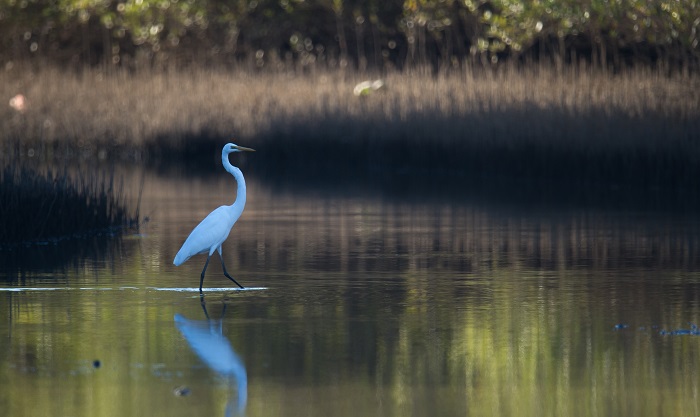
Muscat: The Qurum Natural Reserve is the most important and oldest reserves in the Sultanate of Oman, as Royal Decree No. (38/75) declared it in 1975. It covers an area of 1,045,775 square meters. This reserve proves the Oman’s deep commitment to protect the environment and natural resources.
The reserve contributes significantly to keep biodiversity, as it provides a haven for many rare organisms and plants. It is located in Bausher in Muscat Governorate. It forms part of the Wadi Adai area, and is considered one of the few areas that hold Avicennia (mangroves trees).
The Qurum Natural Reserve gained global recognition when it was classified as the first reserve of global importance in Oman in 2013. It was after the Sultanate joined the RamsarConvention on Wetlands under Royal Decree No. (64/2012).
Biodiversity
The reserve’s establishment aimed to ensure the preservation of its natural value and biodiversity, the mangroves’ protection, Protecting resident and migratory birds and their habitats, and Ensuring sustainable and environmentally sound management of the surrounding area by preparing the reserve to be a destination for community members that aims to promote eco-tourism.
The reserve is a vital habitat for Avicennia marina mangroves, the only species adapted to the Omani environment. The mangrove forests extend an area of approximately 60 hectares. Where tall, healthy trees grow along the coasts in the eastern and western water channels. While some natural seedlings appear on the beach near the mouth of the Western Water Channel, where high trees reach a height of between 7 and 8 meters. The reserve also includes 26 species of halophytic plants that have adapted to the Omani climate.
The reserve is a vital haven for wildlife and marine life. It contains 27 species of crustaceans, 48 species of molluscs, and 40 species of fishes. Additionally, shellfish shrimp and crab. The most noticeable features of the reserve is that it is a shelter for 304 species of birds, including endemic and migratory species from Africa and Russia.
The Environmental Importance
As well as, its great importance to offer habitats for many marine and wildlife organisms, the Qurum Reserve is classified as a wetland, and it is one of the richest and most various ecosystems. Mangrove forests play a vital role as a natural security against floods, act as a barrier zone between the open ocean and the land, it contributes to protect coasts from erosion and mud increase that threaten marine life. Vegetation also stabilizes sediments, enhance the beach stability and cohesion.
The Qurum Reserve in Muscat Governorate is one of the most noticeable eco-tourism destinations worth visiting because of its biodiversity.
The reserve provides visitors with a unique opportunity to explore its natural beauty and learn about wetland environments, including mangrove environments. Visitors can enjoy various activities such as boating, walking on boardwalks extending within the mangrove forests, and watching birds and marine life.
The reserve is an important destination for educational tourism, as students and those interested benefit from studying this unique environment and learning about its importance.Muscat Governorate supports the competent authorities’ efforts to ensure this valuable ecosystem’s sustainability, promote sustainable tourism, and provide a great tourism experience that contributes to preserve the environment for future generations.
Wetlands (Ramsar)
It is worth noting that the Ramsar Convention that Oman joined in 2013, is an international agreement aimed to protect wetlands from current and future deterioration. This conventionpursues to enhance the basic ecological functions of wetlands and develop their economic, cultural, scientific and recreational roles, and is called by the “Ramsar” city in Iran.
Wetlands include regions where water is the main factor that affects the environment, the plants and animals found there. These lands include natural and artificial swamps, nearby coastal areas, islands, and parts of the marine environment whose depth exceeds six meters. It also includes environments of rivers, lakes, mangroves and coral reefs.